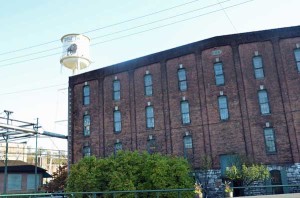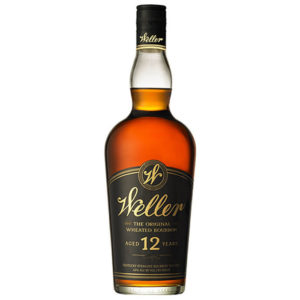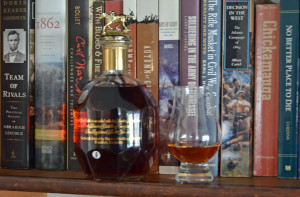Buffalo Trace Has Kept Many Of Its Prices Unrealistically Low For Years. Has It Helped Or Hurt Consumers?
By Richard Thomas
Although the Buffalo Trace Antique Collection (BTAC) and Pappy Van Winkle have enjoyed such demand that one needed to put their name on a waiting list to get a bottle as far back as 20 years ago, it is only in the last several years that the distillery’s normal products became scarce commodities. In my mind, that transition to all their whiskeys becoming scarce began in 2014, when the late Josh Ozersky dubbed W.L. Weller 12 Year Old “Baby Pappy,” thereby expanding the gathering Pappy Fever to include Buffalo Trace’s other wheated bourbons. Perhaps it was inevitable that this would happen, but demand for all things named Weller grew exponentially after that.
The peculiar thing was that even as first Weller 12 Year Old and then all other expressions named W.L. Weller disappeared from store shelves, the official prices on those products didn’t change. When Ozersky wrote his article, Weller 12 Year Old was just $26 a bottle. Make no mistake, the price has risen steadily over the years, and is now officially set at $40. However, that is just keeping pace with inflation and costs; the market value of Weller 12 is far, far higher. The official price bears no visible connection to what people are willing to pay for a bottle.
It’s Not Really The Secondary Market
“Market value” is a term I use to describe what one would pay a retailer to acquire said bottle on demand; it does not refer to the unofficial and illegal secondary market. About four years ago, this market price of Weller 12 was $150 a bottle, on par with the official price of a bottle of Michter’s 10 Year Old Single Barrel Rye and Bourbon and other, similar expressions in its class. Which is to say, four times its official price. Today, that market value has risen to almost ten times more than the official price point, to $382.
In time, this gap between Buffalo Trace’s official prices and the actual market value spread to their other products, and then continued to widen. Blanton’s disappeared from store shelves a couple of years ago; the official price is $65, while the market value is $150. Lately, even Buffalo Trace Bourbon–a product that straddles the line between premium and mass market whiskeys, in much the same way that Knob Creek, Elijah Craig and Woodford Reserve do–has sometimes been scarce on store shelves and commands a market value approximately the same as the official pricing on Weller 12!
Several years ago, the secondary market had a lot to do with this growing gap between what prices were supposed to be and what people actually paid. 2015 or so was a time when having a good relationship with your liquor store owner, waiting lists or winning a lottery could score one a much sought after bottle, and most who managed that score promptly turned around and flogged that bottle on Facebook or Reddit for whatever that black market would bear. It’s been a long time now since that scenario was the driver of exploding prices; the collectors with deep pockets continue to play their part at the gas pedal, but on the sales side it’s the retailers themselves (and possibly the distributors) who have taken over the steering and gear stick.
Back in the day, enthusiasts celebrated Buffalo Trace’s near-frozen prices, writing posts in forums about working connections to acquire a bottle of George T. Stagg for just $70 became part of the bourbon culture. But did that policy of keeping the official price artificially low actually help the consumer, either then or in the long run? My answer, then and now, is no. It did not.
Price Controls And Economics
Bourbon enthusiasts have gained some experience with an economics tool that most Americans have no direct knowledge of: price controls. In a free market, supply and demand are regulated by pricing. As demand outstrips supply, prices rise until an equilibrium is reached. By and large, that is how most whiskey companies operate, and the reason one has seen the prices on their limited edition items rise steadily and sharply in recent years.
Not so with Buffalo Trace, which has instead instituted a de facto price control regime on their most sought after products. Today, if anyone is familiar with price controls, it is as a dim memory from the Nixon Administration or in the form of rent control; a price is set artificially low to cushion the consumer from what would otherwise be high prices. But realize rent controlling some apartments inevitably makes those apartments that are not rent controlled more expensive, and Nixon’s price controls are widely regarded as a failure.
In much the same way as with rent control, price controls on commodities deepen a shortage by leaving demand uncurbed. Whereas rising prices discourage demand for all but essential goods (“essential” meaning food, water, etc.), frozen prices often achieve the reverse. All the textbook outcomes of a price control regime, such as black market trading (i.e., the secondary market) and rampant shortages, are plain to see with so many Buffalo Trace brands now. Recall that this shortage of almost everything coming out of Buffalo Trace has taken place despite major expansions in production output going back a decade, and what has happened in the retail market to Buffalo Trace’s product line is unique to that distillery. Thanks to a combination of pricing what the market will bear and expanded production, the other Kentucky and Tennessee majors (large distilleries) are relatively on top of the demand of their products.
In 2015, many pundits wrote about a bourbon shortage that wasn’t real, while praising Buffalo Trace’s artificially low prices. Now there really is shortage, and for that one distillery’s products, and the two things are in no way a coincidence. That speculators and hoarders have turned everything named Weller, Taylor, Blanton’s and perhaps even Buffalo Trace Bourbon itself into a collectible is an outcome one could have gleaned in an Economics 102 textbook.
 The Whiskey Reviewer A World of Whiskey, Poured Every Weekday
The Whiskey Reviewer A World of Whiskey, Poured Every Weekday




I have seen the ridiculous Blanton’s shortage blamed on hipsters, collectors, hoarders, taters and basically anybody and everybody. This is the first time someone has grabbed some economics and tried to explain it, and the first time somebody has made the point that what is going on with Trace is only going on with Trace. Good work.
So we’re angry that Buffalo Trace is still selling a cheap $30 bourbon for $30, which is all its worth instead of price gouging it to $60 so it’s less scarce? It’s still a cheap bourbon that I buy becuae it’s an excellent quality cheap bourbon. If it was $45-50 I’d never waste my money on it.
You clearly aren’t upset that you can’t buy Blanton’s or Taylor or Weller anymore, at least not without paying a grossly inflated price, so why include yourself in that “we?”
What he is telling you is that if BT is disappearing from the shelves at $30 a bottle and they stick to $30, then the dudes running the shops will hike the price, which you say you won’t pay but the taters will pay it and there won’t BE ANY BT at all. Same as happened to Weller 107 years ago, and then Blanton’s. Duh.
Bravo sir, one of the first times I’ve seen BT called out for their role in these ridiculous prices and perpetuating a false narrative. I was ostracized for saying basically the same on a bourbon forum a while back, which I quit. I’ve been on the bourbon train since there was only one car and have gone through much more than my fair share of Pappy’s and BTAC. They are great bourbons, but that doesn’t make the Wellers and Blanton’s great and certainly does not justify the price. I don’t even look for BT product any longer snd encourage others to do the same.
This is the golden age of bourbon and there are so many very good to great bourbons available I don’t see a reason to buy BT or any product that takes advantage of their customer base. The mixers like Barrell Craft Spirits, Bardstown Bourbon Company, and many others regularly release really good to great bourbons. The sourced bourbons continue to get better with gems coming out of Boone County, Calumet, and others. There are even those like Garrison Cowboy that can rival BTAC releases, not cheap but obtainable. Not to mention old standards like Four Roses single barrels and Beam premium products that certainly hold their own against the Wellers and Taylor’s.
Expand your horizons and sooner or later BT will regret what they did.
I agree with Larry. Enough is enough! I no longer waste my time on “the Buffalo hunt”. If it’s there, fine, I will buy it. But there are so many good bourbons in the $30-$40 price range that I can count on being available that I no longer have a narrow view of what is my favorite.